Disc brake pads, like rim brake pads, wear out. But unlike rim brake pads which are out in the open and easy to see, disc brake pads are hidden inside the brake caliper housing and are a part of the mysterious (to some) inner workings of disc brakes. Out of sight, out of mind. It’s not rare that a customer brings in their disc brake equipped bike and complains that the brakes are not working right. Sometimes all it needs is a cable and piston adjustment or, in the case of hydraulic disc brakes, a line bleed, but most often the pads are just worn down. With cable actuated brakes there are dials on either the outboard side of the caliper or on both the outboard and inboard sides. As the pads wear the piston(s) need to be dialed in so the pad(s) move closer to the rotor. Close enough that when the brake lever is pulled the pads will clamp the rotor with enough force to stop the bike, but not so close that the pads rub on the rotor when the brake lever is released. Hydraulic disc brake have no such adjustment and rely on the hydraulic fluid to keep the correct pad to rotor spacing.
Hydraulic disc brakes will have a hydraulic line attached directly to the brake while a cable actuate brake will have a short section of braided steel cable attached to the brake.
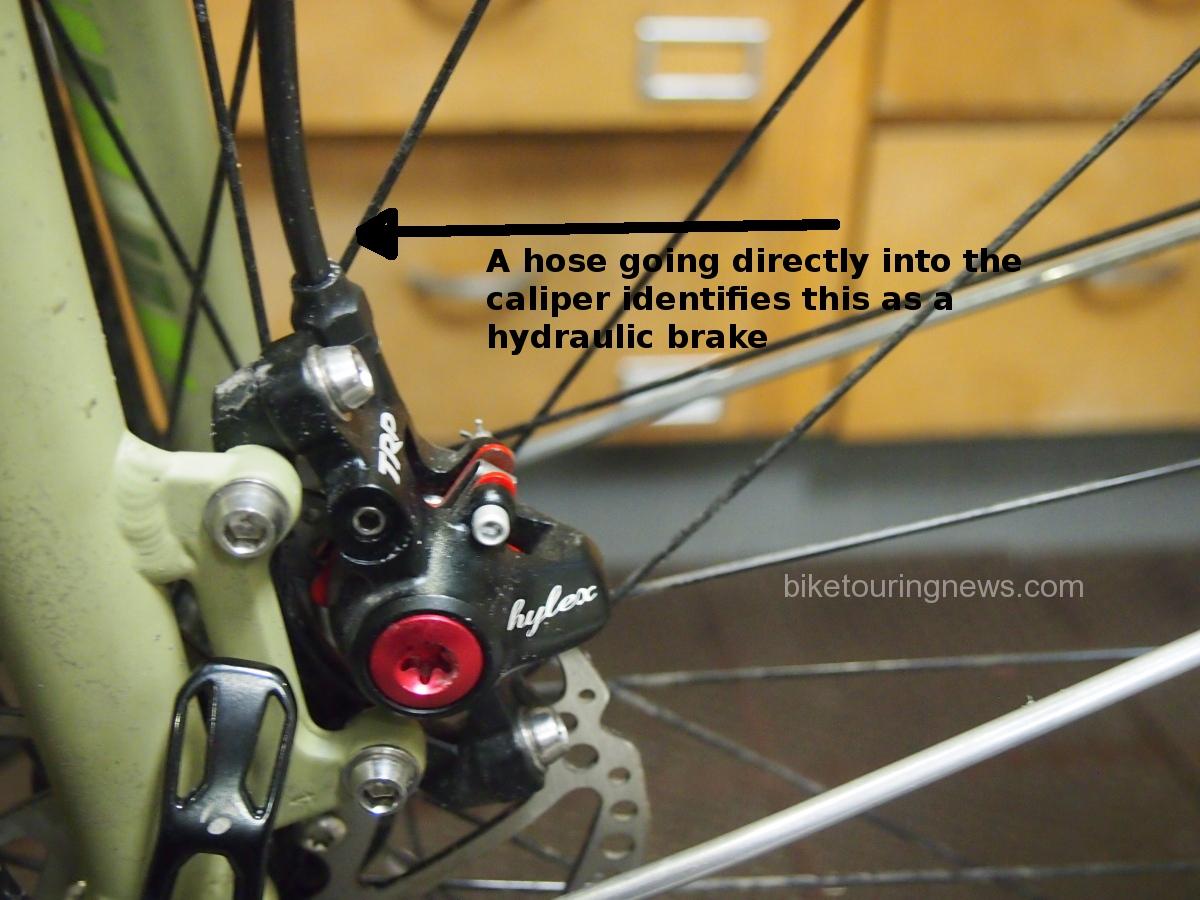
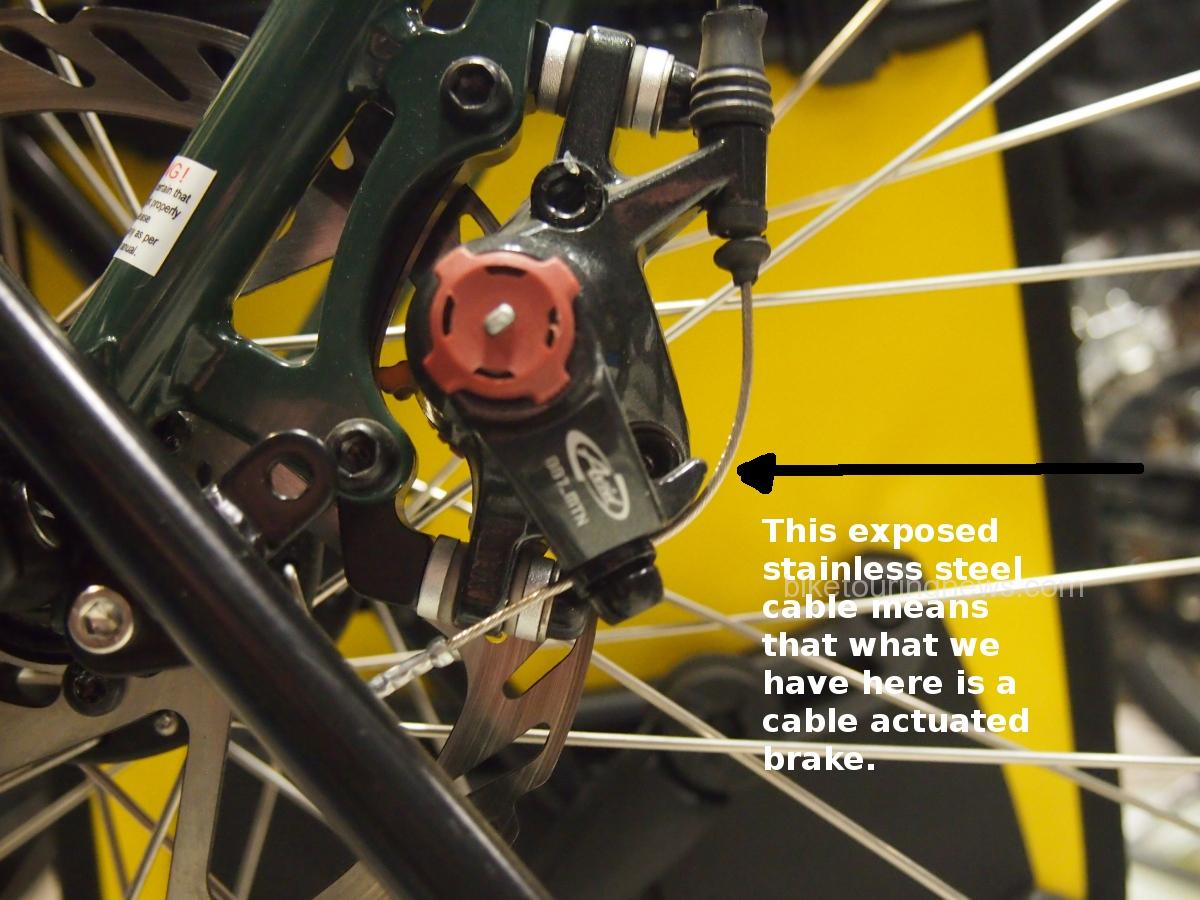
A thin block of braking compound is bonded to a steel or aluminum backing plate to form the brake pad. A pair of brake pads with a spring sandwiched between them are inserted into the brake caliper and held in place by the spring’s tension and/or with a bolt or a cotter pin. The spring also works to keep the pads separated and away from the rotor when not braking. The compound on a new brake pad is about as thick as a nickel. When, by visual inspection, the compound is as thick as a dime or less it is time to replace the pads.
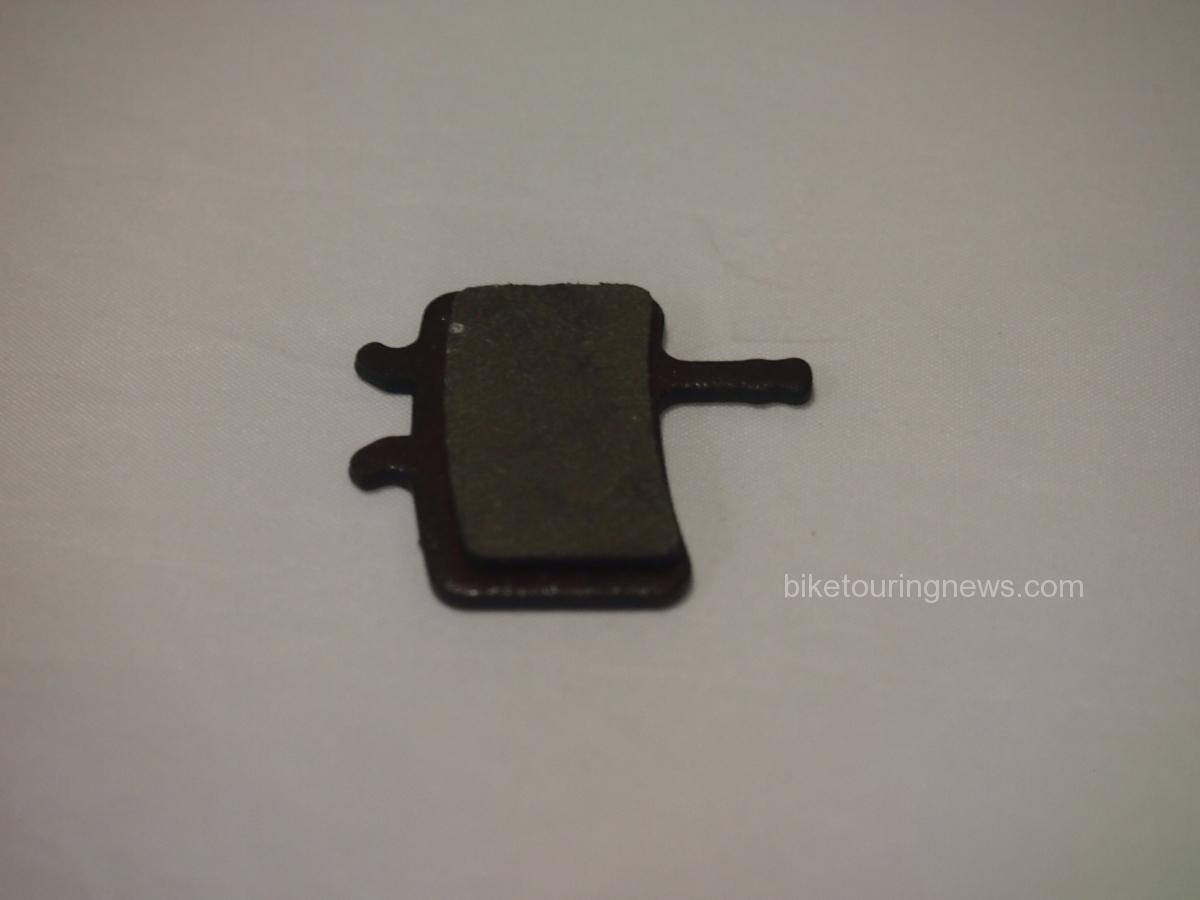
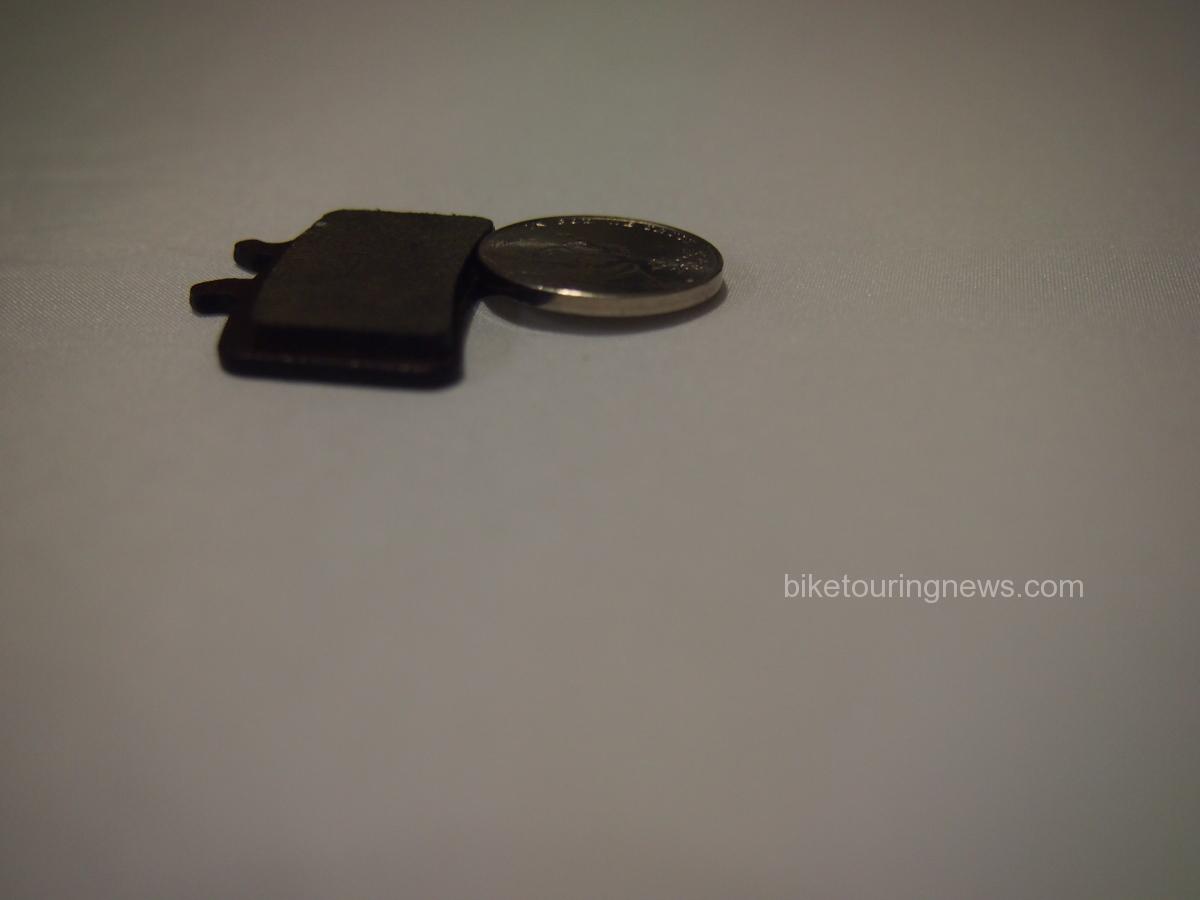
By standing in front of the bike and sighting along the plane of the brake rotor where the rotor passes through the brake pads the thickness of the remaining brake compound can be seen, usually without removing the wheel. The rear pads can be checked the same way by sighting from the back of the bike. If it’s difficult to see, the wheel may need to be removed for easier access. Replacing disc brake pads is not difficult but it can be a little fiddly getting everything in the right place and adjusted. Every model or make of brake will have a slightly different process for changing the pads but instructions can be easily found on the manufacturer’s website.
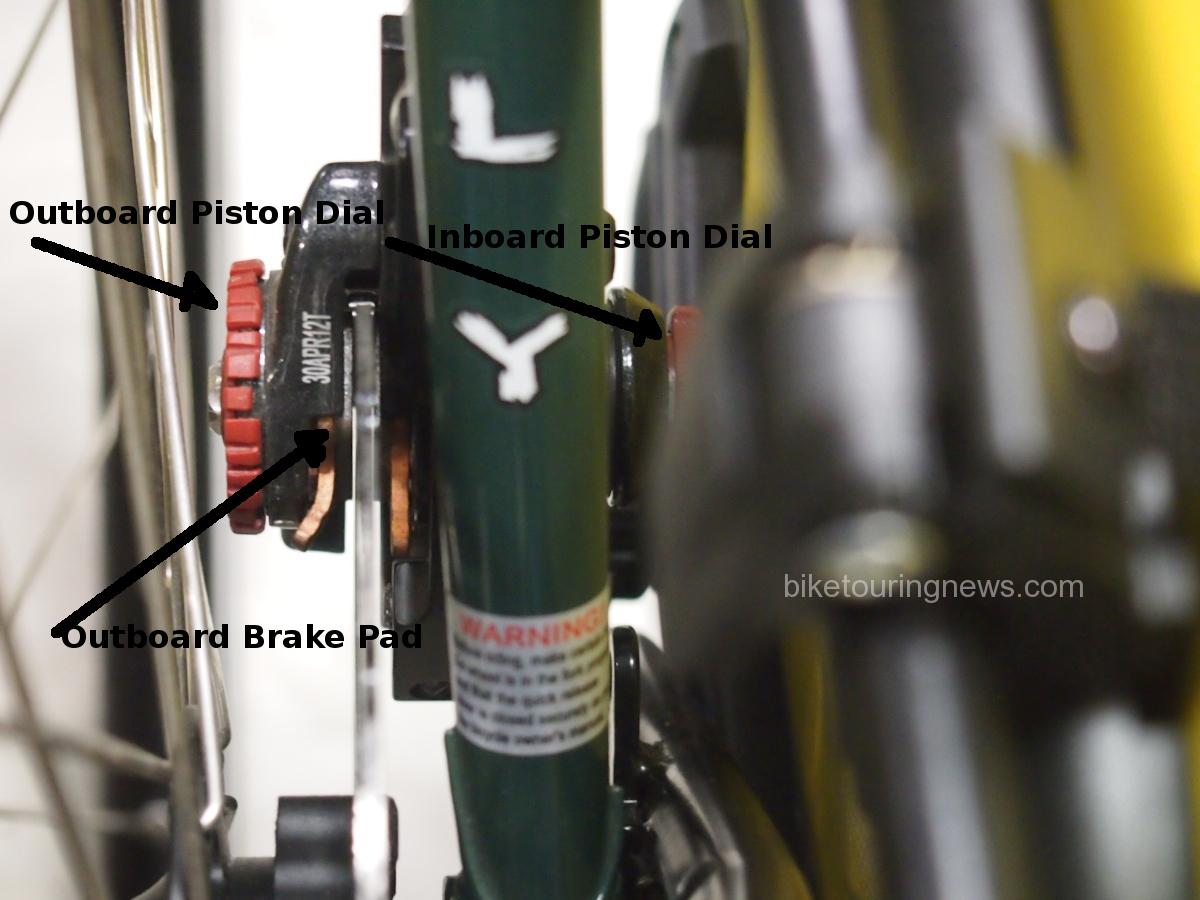
Brakes are sort of important on a touring bike; being able to stop or slow down is good. This is one of those things we recommend people know how to deal with. Maybe not so much on an inn to inn tour or a cross country, credit card tour, but definitely for someone who will be out for weeks or months without the luxury of a decent bike shop or mechanic. Disc brake pads are small and light too so it’s easy to carry spares.

2 replies on “Disc Brake Pads, When to Replace Them”
I’m running discs again after years of running drum brakes. A dime width or less, replace the pads. Perfect– even I can remember that.
Should include millimeters too. Not everyone is intimately familiar with American coinage.